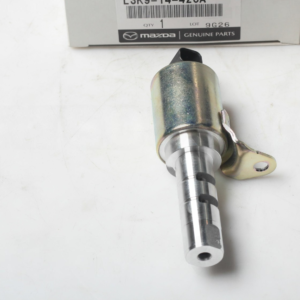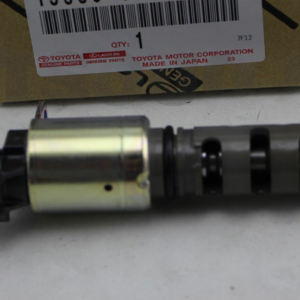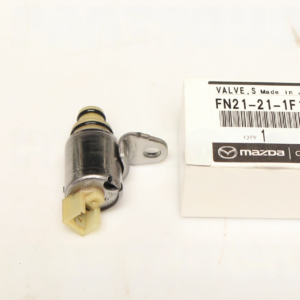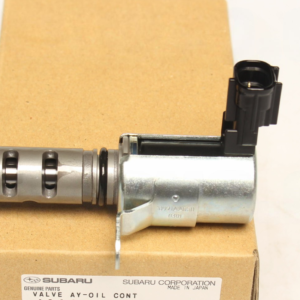Title: Oil Control Valve: Optimizing Engine Performance with Precision Oil Flow Management
In the intricate ecosystem of an automotive engine, where precision and efficiency reign supreme, the oil control valve emerges as a silent yet indispensable component, orchestrating the flow of oil with unparalleled accuracy. Often hidden within the engine’s intricate network of passages and channels, this unassuming device plays a pivotal role in optimizing engine performance, fuel efficiency, and emissions. In this blog, we’ll unravel the significance of the oil control valve, how it works, its types, and its indispensable contribution to the smooth and efficient operation of modern engines.
### Understanding the Oil Control Valve
The oil control valve, also known as the variable valve timing (VVT) solenoid or camshaft phaser, is a crucial component of engines equipped with variable valve timing systems. Its primary function is to control the flow of engine oil to the camshaft phasers or variable valve timing mechanisms, allowing for precise adjustment of valve timing and lift according to driving conditions.
### How the Oil Control Valve Works
The oil control valve operates based on inputs from the engine control unit (ECU) or powertrain control module (PCM), which continuously monitor engine speed, load, temperature, and other parameters. When adjustments to valve timing are required, the ECU sends signals to the oil control valve, which actuates to regulate the flow of oil to the camshaft phasers or variable valve timing mechanisms. By adjusting the timing of intake and exhaust valve opening and closing, the oil control valve optimizes engine performance, fuel efficiency, and emissions.
### Types of Oil Control Valves
1. **On/Off Solenoid Valves**: On/off solenoid valves are the most basic type of oil control valve, operating in a binary manner—either fully open or fully closed. These valves are typically used in simpler variable valve timing systems and provide basic control over valve timing.
2. **Pulse Width Modulated (PWM) Valves**: PWM valves offer more precise control over oil flow by varying the duration and frequency of electrical pulses sent to the solenoid. This allows for finer adjustments to valve timing and lift, resulting in improved engine performance and efficiency.
### Importance of Oil Control Valves in Engine Performance
1. **Optimized Power and Efficiency**: By adjusting valve timing and lift according to engine load and speed, oil control valves optimize power delivery and fuel efficiency, enhancing overall engine performance.
2. **Reduced Emissions**: Precise control over valve timing and lift allows for more efficient combustion, resulting in lower emissions of harmful pollutants such as nitrogen oxides (NOx) and hydrocarbons (HC).
3. **Improved Driveability**: Variable valve timing systems equipped with oil control valves enhance engine responsiveness and torque delivery across the entire rpm range, providing a smoother and more enjoyable driving experience.
### Conclusion
In the intricate tapestry of engine design and performance, the oil control valve emerges as a silent conductor, orchestrating the flow of oil with precision and finesse. By optimizing valve timing and lift, these unassuming components play a pivotal role in shaping engine performance, fuel efficiency, and emissions. As automotive technology continues to advance, the importance of oil control valves in achieving optimal engine operation remains undeniably critical, ensuring that vehicles navigate the roads with power, efficiency, and environmental responsibility.
In stock (can be backordered)
$29,137.67
Title: Oil Control Valve: Optimizing Engine Performance with Precision Oil Flow Management
In the intricate ecosystem of an automotive engine, where precision and efficiency reign supreme, the oil control valve emerges as a silent yet indispensable component, orchestrating the flow of oil with unparalleled accuracy. Often hidden within the engine’s intricate network of passages and channels, this unassuming device plays a pivotal role in optimizing engine performance, fuel efficiency, and emissions. In this blog, we’ll unravel the significance of the oil control valve, how it works, its types, and its indispensable contribution to the smooth and efficient operation of modern engines.
### Understanding the Oil Control Valve
The oil control valve, also known as the variable valve timing (VVT) solenoid or camshaft phaser, is a crucial component of engines equipped with variable valve timing systems. Its primary function is to control the flow of engine oil to the camshaft phasers or variable valve timing mechanisms, allowing for precise adjustment of valve timing and lift according to driving conditions.
### How the Oil Control Valve Works
The oil control valve operates based on inputs from the engine control unit (ECU) or powertrain control module (PCM), which continuously monitor engine speed, load, temperature, and other parameters. When adjustments to valve timing are required, the ECU sends signals to the oil control valve, which actuates to regulate the flow of oil to the camshaft phasers or variable valve timing mechanisms. By adjusting the timing of intake and exhaust valve opening and closing, the oil control valve optimizes engine performance, fuel efficiency, and emissions.
### Types of Oil Control Valves
1. **On/Off Solenoid Valves**: On/off solenoid valves are the most basic type of oil control valve, operating in a binary manner—either fully open or fully closed. These valves are typically used in simpler variable valve timing systems and provide basic control over valve timing.
2. **Pulse Width Modulated (PWM) Valves**: PWM valves offer more precise control over oil flow by varying the duration and frequency of electrical pulses sent to the solenoid. This allows for finer adjustments to valve timing and lift, resulting in improved engine performance and efficiency.
### Importance of Oil Control Valves in Engine Performance
1. **Optimized Power and Efficiency**: By adjusting valve timing and lift according to engine load and speed, oil control valves optimize power delivery and fuel efficiency, enhancing overall engine performance.
2. **Reduced Emissions**: Precise control over valve timing and lift allows for more efficient combustion, resulting in lower emissions of harmful pollutants such as nitrogen oxides (NOx) and hydrocarbons (HC).
3. **Improved Driveability**: Variable valve timing systems equipped with oil control valves enhance engine responsiveness and torque delivery across the entire rpm range, providing a smoother and more enjoyable driving experience.
### Conclusion
In the intricate tapestry of engine design and performance, the oil control valve emerges as a silent conductor, orchestrating the flow of oil with precision and finesse. By optimizing valve timing and lift, these unassuming components play a pivotal role in shaping engine performance, fuel efficiency, and emissions. As automotive technology continues to advance, the importance of oil control valves in achieving optimal engine operation remains undeniably critical, ensuring that vehicles navigate the roads with power, efficiency, and environmental responsibility.
| Warehouse | Inventory at warehouse 2 |
|---|




Get E-mail updates about our latest products and special offers.
Sensors and More is Jamaica’s ultimate online auto parts store. Established in 2020, we specialize in genuine electrical parts for Japanese, Read more…
Reviews
There are no reviews yet.